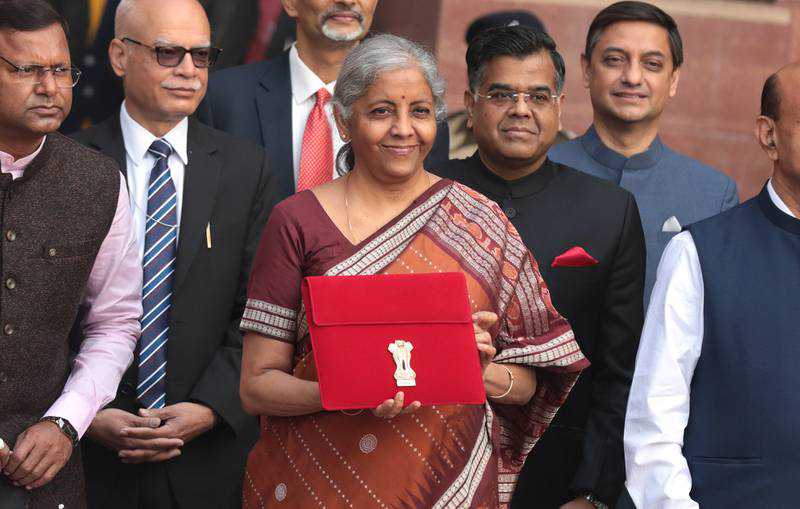India's growth-focused budget to boost economy as inflation rises
01 February, 2022

India's government on Tuesday unveiled a 39.45 trillion rupees ($530 billion) growth-focused budget in an effort to boost the economy amid rising inflationary pressures and a resurgence in Covid-19 infections.
The budget is aimed at keeping the country on track to become the world's fastest-growing major economy, with plans to spend heavily on infrastructure, including railways and roads.
“This budget continues to provide impetus for growth,” said Nirmala Sitharaman, India's Finance Minister, who is delivering the annual plan to Parliament for the financial year beginning in April.
Ms Sitharaman said revenue, excluding borrowing, was estimated at 22.84tn rupees. The government set the 2022-2023 budget deficit at 6.4 per cent of gross domestic product, compared with a 6.9 per cent estimate for the previous year. India's 10-year bond yield surged 10 basis points higher on the budget deficit announcement, according to Bloomberg.
The budget is being presented against the backdrop of an Omicron-driven surge in Covid-19 in recent weeks that prompted authorities to impose some fresh restrictions, hampering business activity.
It has increased pressure on Prime Minister Narendra Modi's government to prioritise boosting economic growth over fiscal consolidation.
The presentation of the budget comes the day after the release of India's annual government report on the economy. It projects India to be the world's fastest growing major economy in the coming financial year, expanding between 8 and 8.5 per cent.
That is lower than the IMF's forecast for expansion of 9 per cent. It is also down on the survey's projection for GDP growth of 9.2 per cent in the current fiscal year, off a low base after a historic recession in the previous year, as the enforcement of one of the world's strictest Covid-19 lockdowns battered India's economy in 2020.
Unemployment, which hit a four-month high of 7.9 per cent in December, according to data from the Centre For Monitoring India Economy, and steep inflation is pushing the government to deliver a budget that addresses the challenges faced by the masses. A recent Oxfam report highlighted that inequality in India has worsened during the pandemic.
Adding to the pressure on the government, several key state elections will be held over the coming weeks.
IHS Markit PMI data released on Tuesday revealed that India's manufacturing sector had also got off to a strong start in 2022, coming in at 54 in January, down from 55.5 in December. Though the data signals the weakest improvement in the health of the sector since last September, the headline figure remained above its long-run average of 53.6, according to the survey. A figure above 50 represents an expansion.
“The latest PMI results indicated that the new wave of Covid-19 had a mild impact on the performance of the Indian manufacturing sector. A number of measures such as output, new orders and input buying remained in expansion mode. Although growth rates eased, they were historically strong,” said Pollyanna De Lima, economics associate director at IHS Markit.
Source: www.thenationalnews.com
